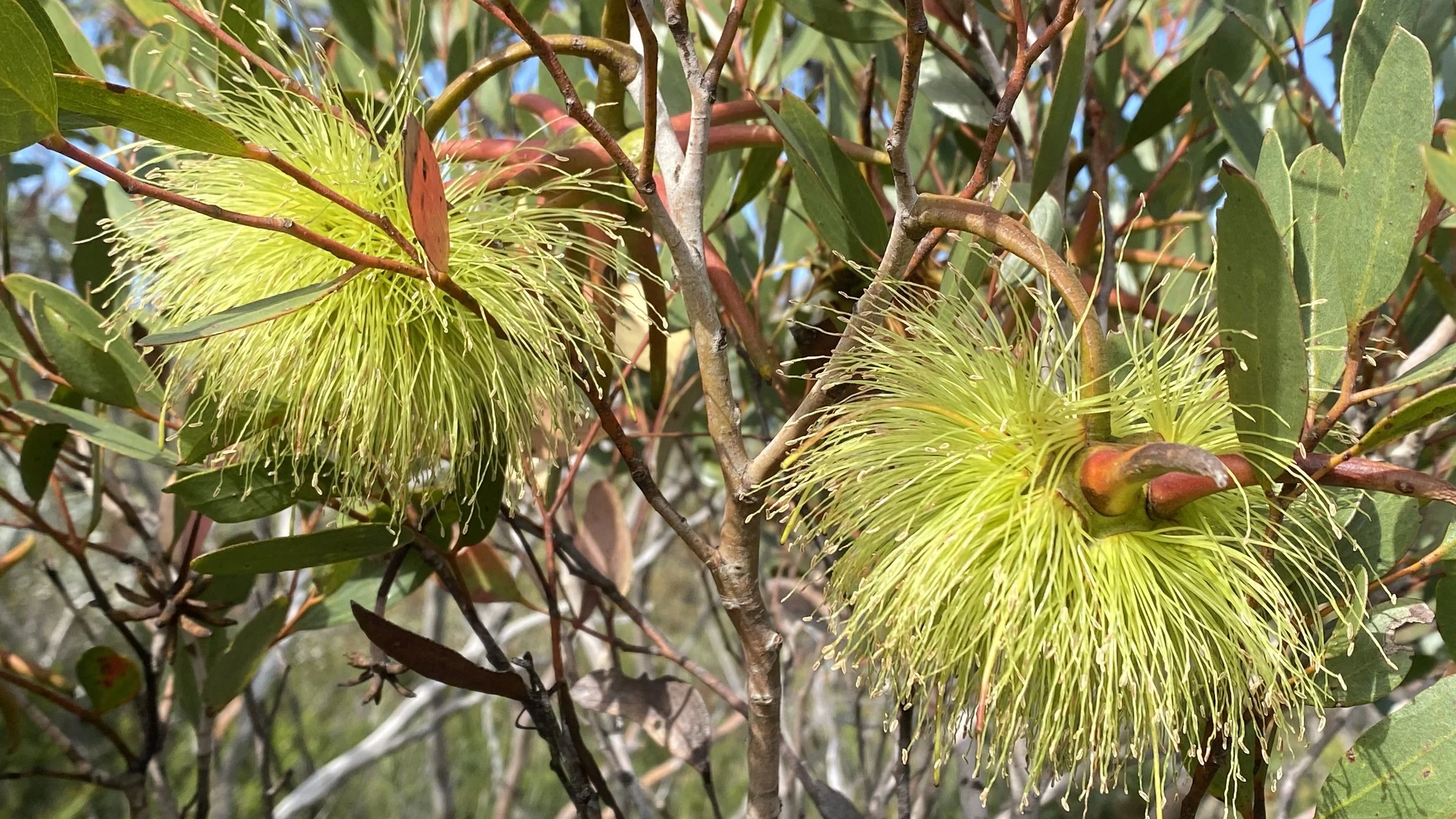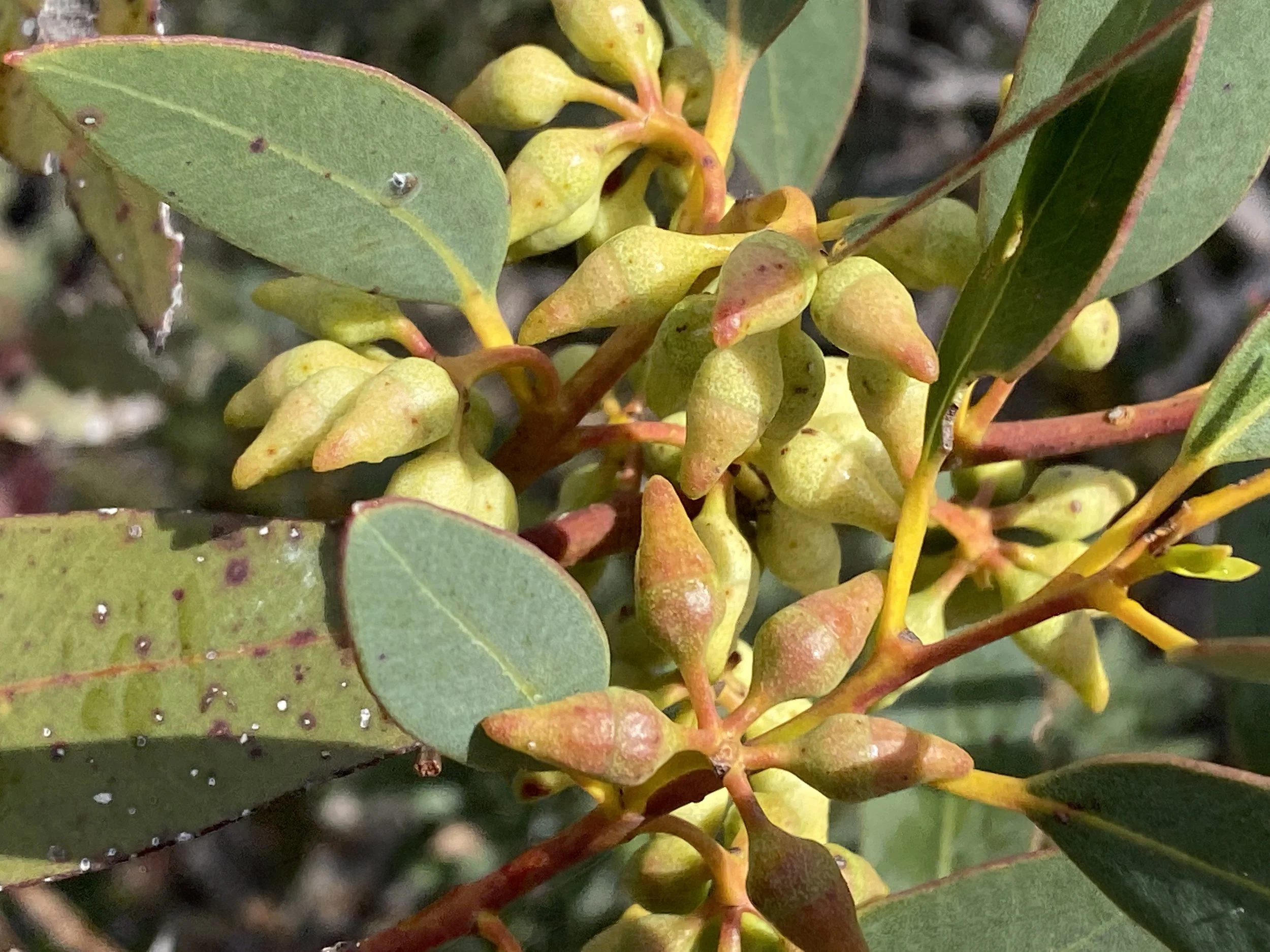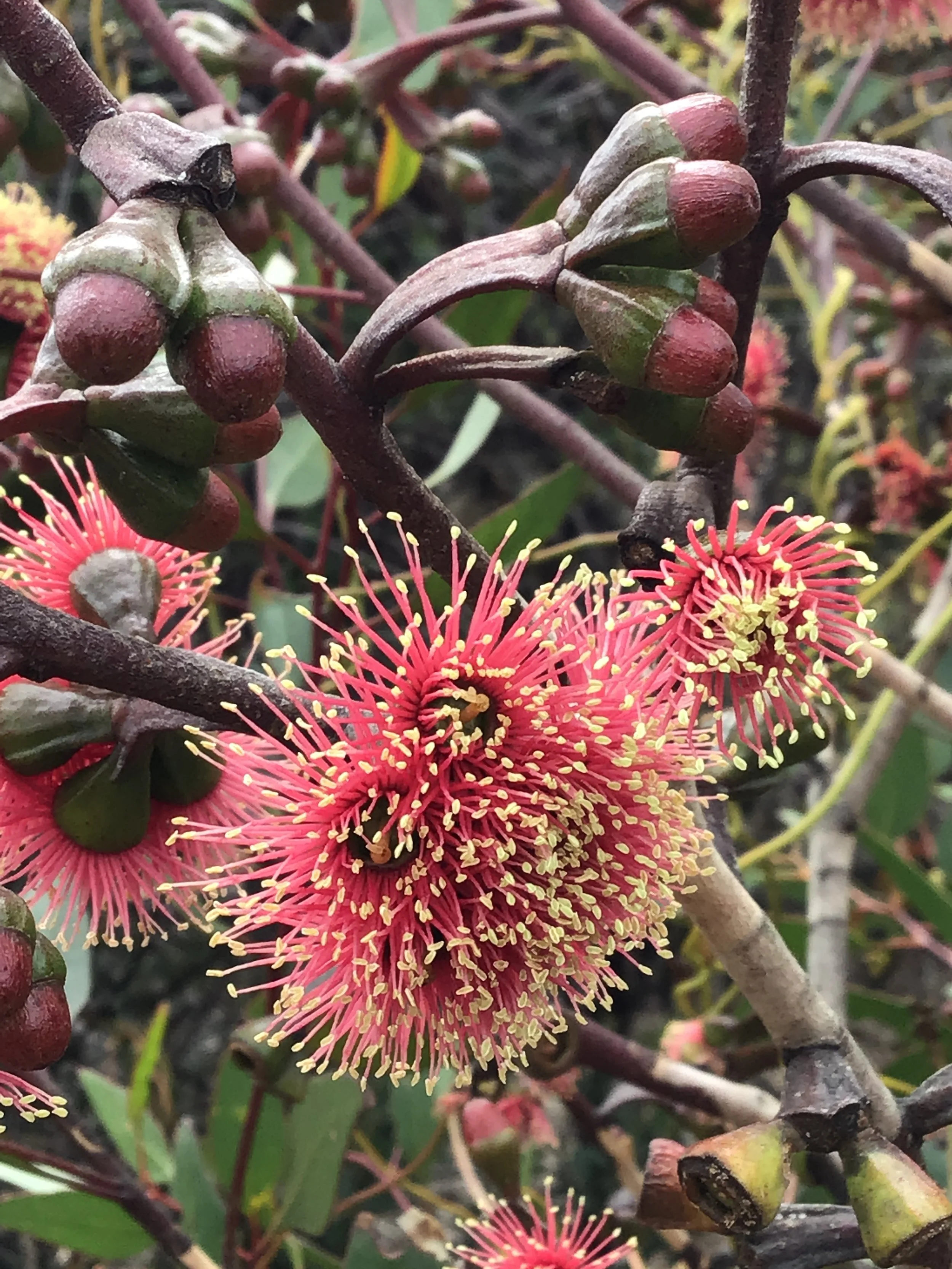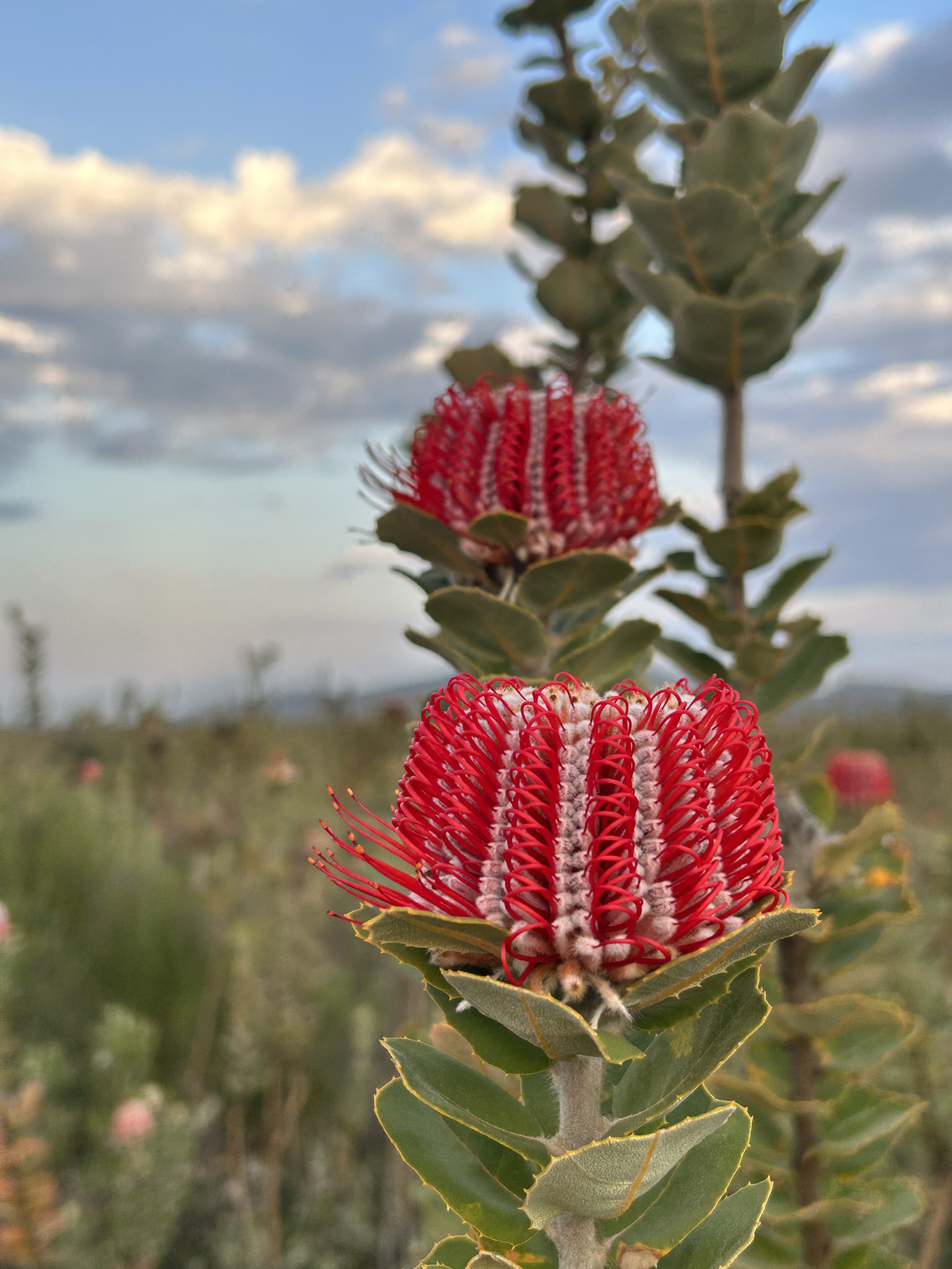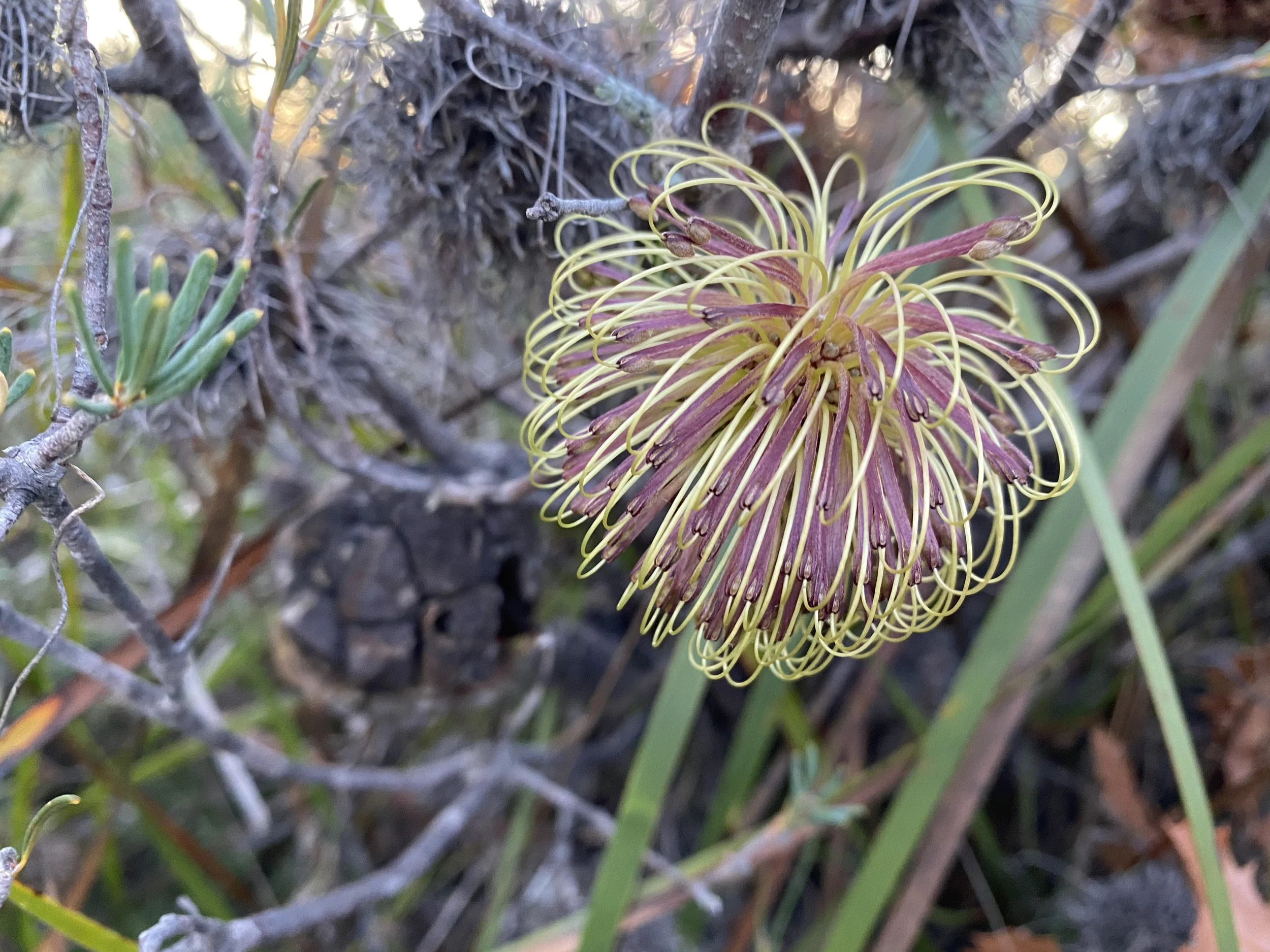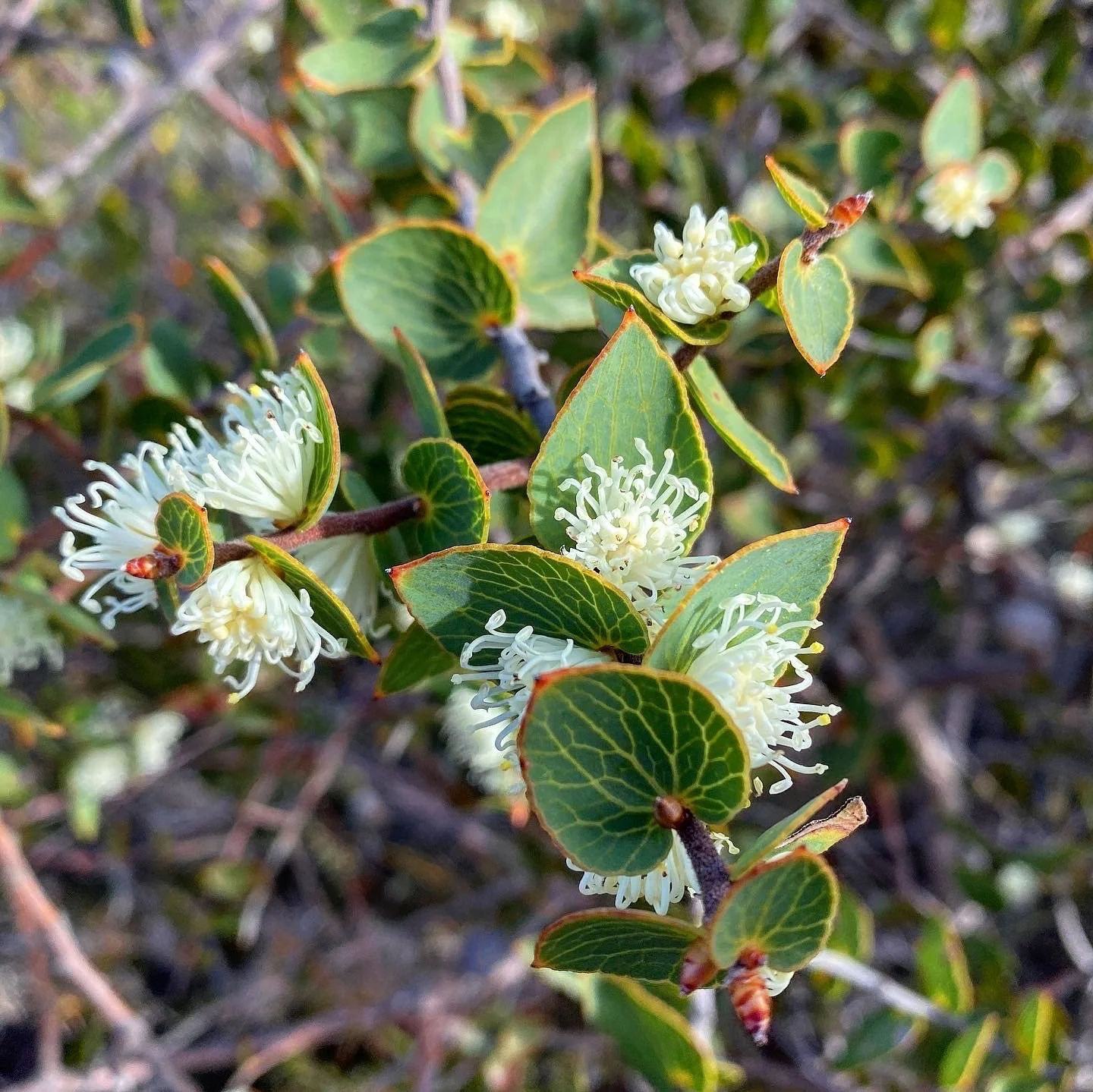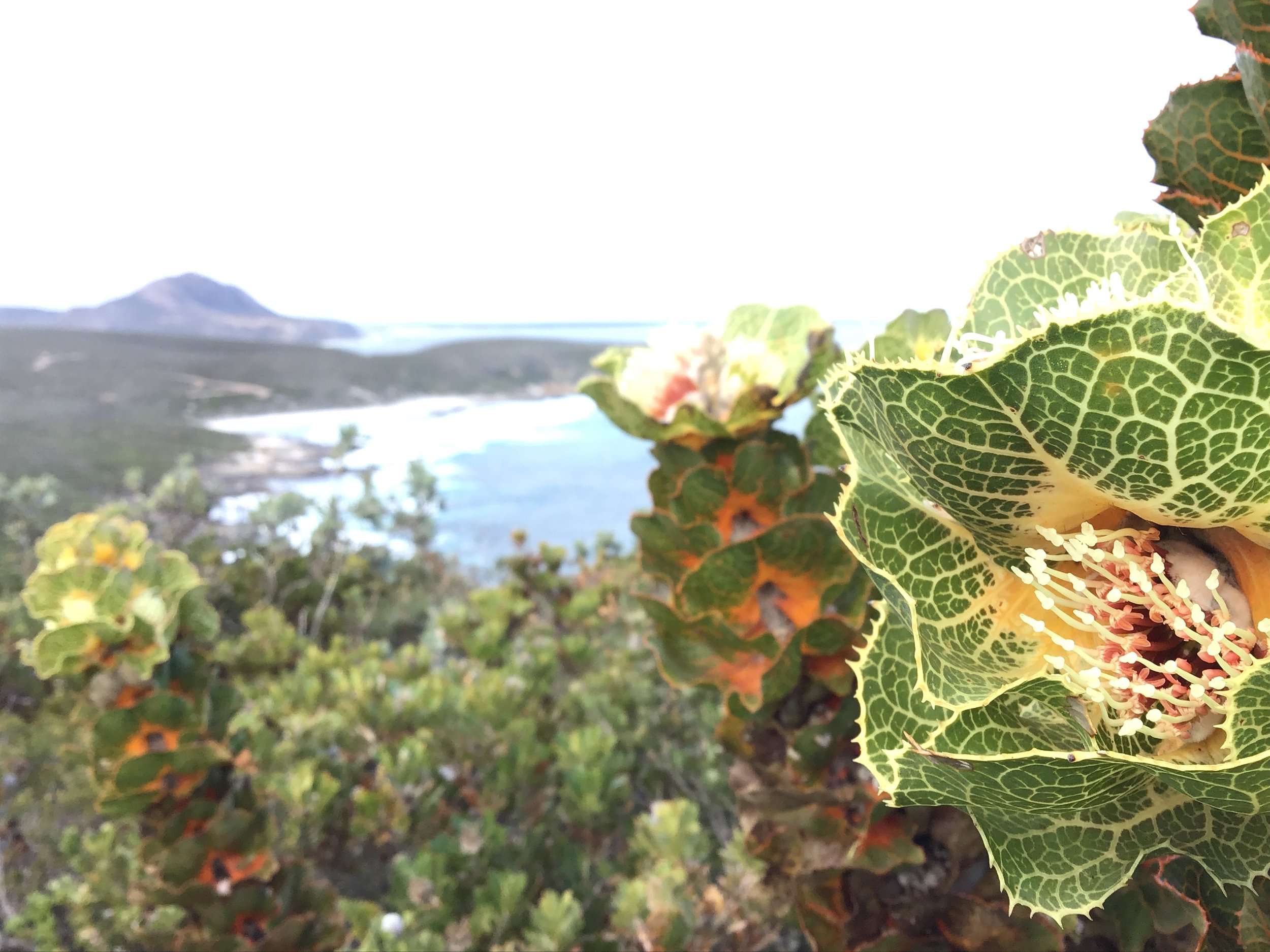This is a Eucalyptus lehmannii subsp. Lehmannii.
Also called a Bushy Yate.
They’re endemic to the southwest of Western Australia.
I think it’s one of the most joyous of flowering trees.
This one was photographed in the Fitzgerald River National Park, near Bremer Bay
When it’s in flower it looks like there are hundreds of suns exploding inside its canopy.
Each one of those globes is a cluster of flowers bonded together.
They (botanists) call the flowers and how they’re arranged, the plant’s inflorescence - that’s my favourite new word.
Along with all the other plant species found in the highly diverse southwest region - 8000 or more - Eucalyptus have evolved and ‘innovated’ - the features necessary to survive the intense conditions of the region.
This evolution began over 100 million years ago.
Angiosperms and the revolution
All flowering plants - AKA angiosperms - appeared at least 100 millions years ago possessing a distinct and innovative feature.
A flower.
This meant they could do two things:
Be pollinated by other organisms
Store their seed inside a fruit.
This was a reproductive system double whammy.
They also produced natural insecticides and maximised photosynthesis with 10x more veins in their leaves.
Armed with these features, and helped along by the extinction of dinosaurs, flowering plants continued to diversify.
A major shift came when they engaged insects, birds and small mammals to help them pollinate and distribute seeds.
This drove the biodiversity of those and 100,000s of other organisms too.
They are the foundation on which our civilisations are built: our food, our materials, our medicine.
It took them 50 million years - not that long in evolutionary terms - to colonise almost every land ecosystem on the planet.
They (paleobotanists) call it the Angiosperm Terrestrial Revolution.
Today, 90 percent of all plants on the planet are angiosperms.
Most of the major families of WA’s southwest appeared during this period.
Ravensthorpe Range - Eucalyptus epicentre in WA
Plants of the southwest and their prolific biodiversity
The environment into which plants appeared in WA’s southwest posed a lot of challenges.
Poor soils - hardly any nutrients, depleted of Phosphorus
Seasonal drought and lack of water
Seasonal heat - high temperatures
Fire - with the environment becoming increasingly flammable increasing over time
No useful organisms to pollinate or spread seeds
Plenty of plant eating creatures
It was an extreme Darwinian survival of the fittest scenario.
Adaptation or die!
Many perished.
But the ones that made it, thrived.
The ones that made it diversified, and proliferated.
Eucalyptus - Myrtaceae
Eucalyptus made it!
Thank goodness. They are the quintessential Australian plant.
There are 900 species of Eucalyptus - apart from a hand ful of species in Indonesia, New Guinea and one in the Philippines, they’re native to Australia.
147 are found in the southwest of WA, about 60 of them are endemic.
How did they do it?
About 62 million years ago, when they first appeared, Eucalyptus had distinct features that enabled their survival
Against fire
the ability to sprout a fresh shoot from branches or trunk
The ability to resprout fresh shoots from a lignotuber (a woody structure containing nutrients to help feed new growth)
Against poor soils
relationship with fungi where a mycorrhyza is formed allowing the roots of the tree to reach further away and access water and nutrients
Above is Eucalyptus proxima - with colour variations of its flowers.
It could also be a Eucalyptus cernua. They’re very similar.
Both are both found exclusively around Ravensthorpe, northeast of the Fitzgerald River National Park. They share the same downturn in the flower stalk and the fruits and leaves are almost the same.
The big difference: one is a mallee (many branches coming out of a root in the ground) and the other is a mallet (one trunk).
But these are both Eucalyptus proxima - because the cernua is very tall - and I took the photo of a mallee not so tall that I couldn’t get to the flower!How beautiful are the bud caps?
Banksias - Proteaceae
There are about 1400 species of Banksia around the world and Australia.
800 of them are found in the southwest and almost all of them are endemic!
How did they do it?
Clustered roots that allowed them to optimise the access to nutrients
They have leaves that are hard and thick- to survive the heat (schleromorphic)
They have seeds that are contained inside woody fruit that have to be heated by fire to be released.
Seeds are dispersed by ants and emus
There is often a delay between flowering and seed dispersal - called seretony
Hakea - Proteaceae
18 million years ago, they appeared in the southwest.
There are 150 different species of Hakea, 100 in southwest WA.
How did they do it?
clustered their roots to optimise access to nutrients.
evolved into being insect-pollinated and then bird-pollinated - maybe helped along by black cockatoos.
their highly nutritious seed is inside a hard woody fruit that is made of resin and melts during fires to release the seed.
Sometimes these fruit are large and sometimes they are scarce and difficult to find.
They have resprouting features (like Eucalyptus) near the roots that enable them to survive fires
Leaves shapes vary - some have thick and hard leaves to tolerate heat (sclerophyll) and some are spiny to deter insects or birds from eating the flower
Look at the Royal Hakea below (Hakea Victoria).
Endemic to the Fitzgerald River National Park - it dominates parts of the landscapes.
Hakea victoria - Royal Hakea - Fitzgerald River National Park
References:
Benton, M. J., Wilf, P. & Sauquet, H. 2021. The Angiosperm Terrestrial Revolution and the origins of modern biodiversity, New Phytologist, 233: 2017–2035
Brundett, M. 2021. One biodiversity hotspot to rule them all: southwestern Australia—an extraordinary evolutionary centre for plant functional and taxonomic diversity, Journal of the Royal Society of Western Australia, 104, 91 - 122.
French M. & Nicolle, D. 2019, Eucalypts of Western Australia The South-west Coast and Ranges
Groom, P. & Lamont, B. 2015. Plant Life of Southwestern Australia. Adaptations for Survival
Lamont. B.B & Pausas J.G. (nd) Ecology and biogeography in 3D: The case of the Australian Proteaceae

